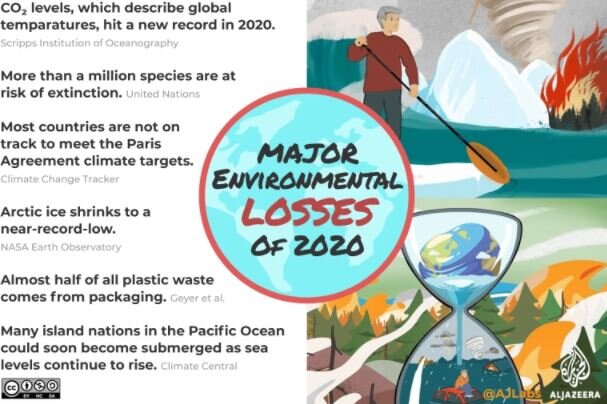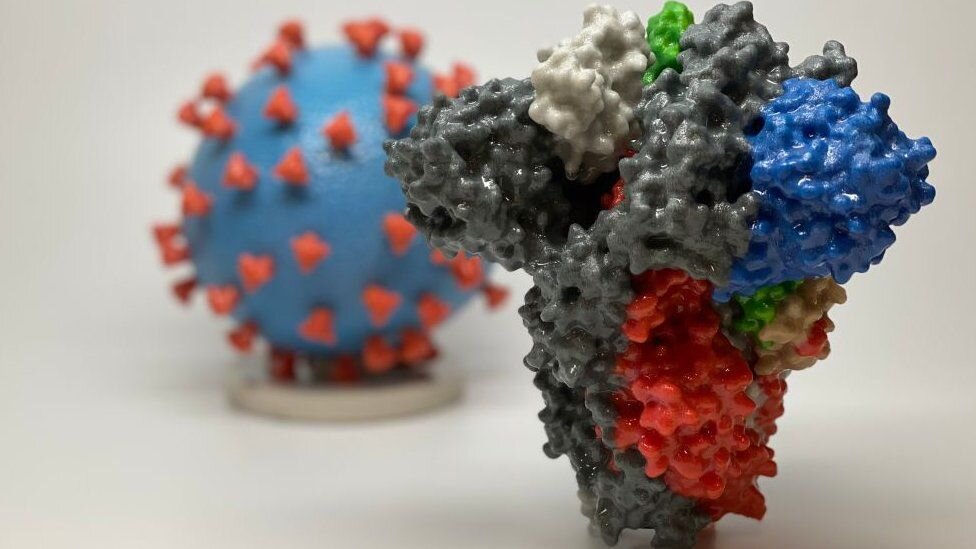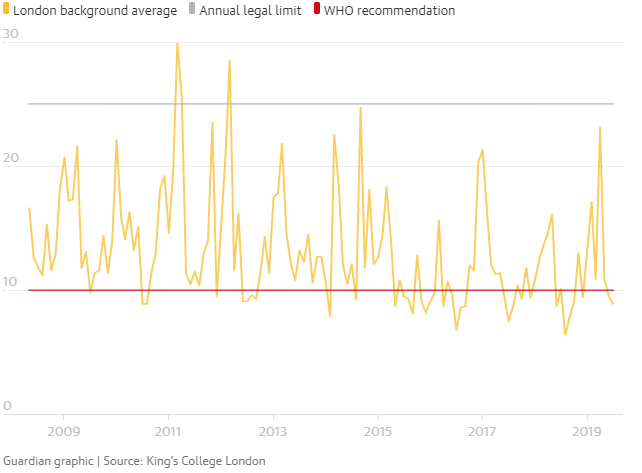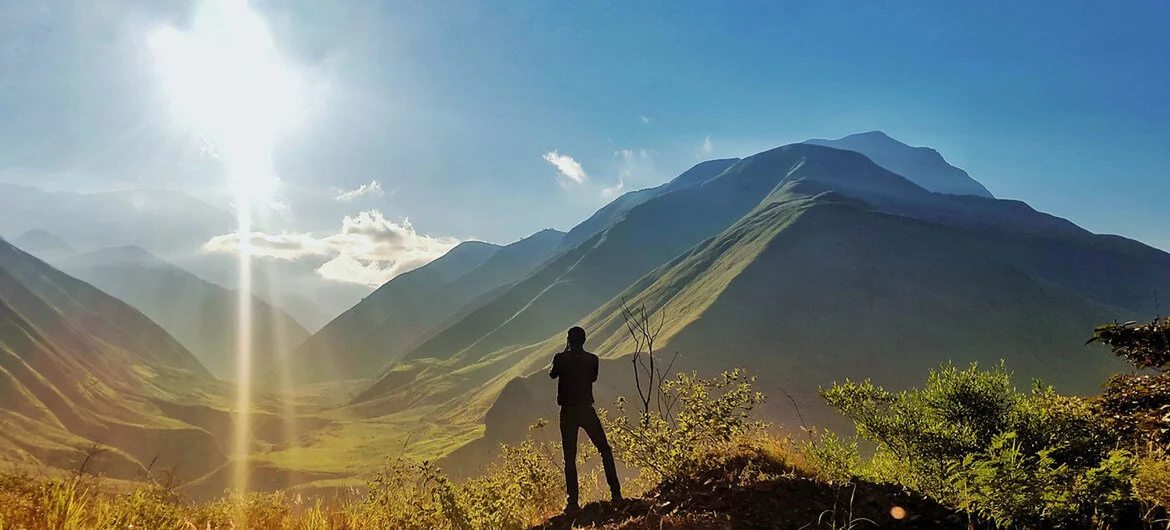A memorable year: readers reveal their silver linings
It was a year to forget, but one we will always remember. But though so much was lost, 2020 was the year when we discovered new things about ourselves, our collective kindness, resilience, compassion, invention and humour, as Guardian readers make clear in their reflections on the silver linings of the year.
In British Columbia, Canada, Leanne Harrison relished new digital opportunities
At age 75, one thing I hope carries forward as a result of pandemic is the large array of Zoom presentations I was able to access this year. International events I would not have been able to attend were at my iPad fingertips, newspaper journalists interviewed at length people I would not have seen, online exercise gurus led me through interesting routines, courses and lectures came to my living room: such a bonanza of intellectual richness
In the English Peak District, Vivienne Hitchings feels fitter at 73 than she did at 72
I have been walking longer distances in the Peak District and discovered its beauty, sharing it with like-minded people who are also escaping the confines of a house. It is so varied, with green meadows, rivers roaring over boulders surrounded by colourful trees, and steep cliffs across the landscape that give stunning views.
The bonus is that at age 73 I also feel so much fitter and healthier than I did at 72. Although at present I can’t interact much with my grandchildren, hopefully because of my improved fitness I’ll be around a lot longer and will make up for this loss with lots of future hugs!
In Toronto, Ren Tashiro sought spiritual renewal
I’m a mother of a teen who has struggled with an anxiety disorder for several years. For me this year, it was learning and applying DBT (dialectical behavioral therapy) skills, mainly acceptance, non-judgment, a core of mindfulness, that has allowed me to stay centred and calm. To this I add daily gratitude thoughts, and I am slowly learning meditation. In spite of the many challenges, I can truly say that there are so many things to celebrate.
I jog every day, and am looking very much forward to skating outdoors at our local park every day this winter! I play women’s hockey, and while that will probably be banned, skating outside is such a gift. Our mayor has done an incredible job, making spaces for Torontonians to exercise outside this year. We are luckier than many.
In Florida, Thomas Olsen took the time to appreciate what he has
The best of this bad year is having been forced off the world’s merry-go-round. It has given me a chance to appreciate my surroundings – the young squirrels chasing each other in play on a large oak; the appreciation of a sunset and moonrise; the return of direct and unhurried dialogue with my mate; the trend to phone calls rather than texting, and an opportunity to plumb my spiritual depths. I am thankful.
In Edinburgh, Susan Marr got dressed up
I have a cousin whose daughter lives in New Zealand. She decided that one way to keep her children happy was to have a daily theme and dress up accordingly. This was tremendous fun. I’ve been Cilla Black, worn stripes, or yellow, or any manner of colours, been a fortune teller in a circus, worn back-to-front outfits.
All this first thing in the morning to catch their day on WhatsApp in NZ. I was so grateful for these challenges on the bleak days when I was upset about being unable to see my children and grandchildren in Edinburgh, my mother in Manchester, and when a close friend died.
In Washington DC, Stephanie Soper had the best car crash she’s ever had
On top of everything else that went horribly askew this year (including developing an autoimmune blood disorder that required immune-suppressant medication just as the pandemic took off), my car was rear-ended in August. Amazingly, other than the accident itself, the whole experience was just lovely.
The man whose car unavoidably hit me was patient, calm, and kind. He offered me a bottle of water and one of his spare masks – I’d been so rattled, I forgot to take mine when I left my car. Police from three jurisdictions came, and every single one was polite, good-humoured, and helpful. The tow truck driver, same. A dear friend lived nearby and rescued me. She took me home to drop off the groceries I’d been out to buy, then took me to dinner.
The place where the accident happened is gorgeous – lush green, by a river at a marina. Truly scenic. The weather was moderate – I wasn’t stuck standing by the scene in steamy heat or pouring rain, just pleasant late-afternoon sunshine. Neither the other driver nor I was injured.
In the aftermath, I wrote to Subaru to compliment them on how well the car had withstood the collision – a carton of eggs in back of car (a hatchback, so, pretty vulnerable in a rear-end crash), had just one slightly cracked egg. That led to a delightful email conversation with a company rep, who sent me a gift. My insurance company, the rental car company, and the collision repair centre all went over and above what they had to do and were just wonderful to work with.
All in all, a bad experience led to a series of truly happy conditions. In a funny way, the car accident was the highlight of 2020.
In Johannesburg, Felix C felt his community show resilience and compassion
Even though South Africa – in deep trouble politically, socially, and economically prior to the pandemic knocking on our door – has been severely impacted by the pandemic on all levels, resulting in staggering unemployment, looming debt defaults, a frail health infrastructure, and the deaths of many of its citizens, it is once again its peoples who have shown their resilience in coming together to face the threat and challenges.
For me the (painful) lessons learned from this global crisis:
• Our global and local society is unjust and broken and must be fixed
• Each one of us has a (small) part to play to help heal our nations
• People do really care and want to share and support each other
• Greed is wasteful and over-consumption is ugly – less is definitely more
• Truthful leadership is in short supply and much of political power is misplaced
• The media feeds diversity and confrontation through fake noise created
• Being “isolated” calms and rewards
• Family and friends are what truly matters
• This is an excellent time to reset oneself
Rachel Batty learned much after being forced to leave her husband in Kuwait and return to England to be with her teenage children
We got through the many upheavals and uncertainties of that time by telling ourselves that with each day that passed, we were one day closer to all being together again. That day has yet to come, but it is now at least in sight.
Coming out is never easy or pain free. Coming out as trans involves a narrative alien to so many ears that it is like trying to make yourself understood in the Tower of Babel. Yet the shroud of lockdown meant that our daughter was able to become herself quietly, discreetly, step by step.
Protected by the Zoom screen and safe space of Microsoft Teams, delighted, emboldened and validated by her new on-screen name, she blossomed in time with the unfolding spring outside. The monochrome landscape of a frozen winter that had trapped her in discomfort for 17 years thawed. She put down the weighty burden of confusion and dysphoria to reveal her true self, finding a language to express it both eloquently and patiently.
I am grateful for the incredible support from her school, the time, space and home delivery services that enabled her transformation from awkward and inwardly angry teenage boy to the calm, composed and caring young lady preparing herself for adulthood in a brave new world.
I am grateful for the time I had with her away from the gaze of others to work through my fear, lack of understanding, desire to fix and mend, to gradually reach the point of loving acceptance and letting go. I mourned the loss of our son and the future I had built for him in my mind. I feared for the safety, happiness and prosperity of our trans daughter.
When we shared the news from our different corners of the world, I thirstily drank the words of wisdom, hope and celebration that poured through the grainy screens of mobile phones and scratchy internet connections. Family and friends presented a united front: solid in their support, steadfast in their love. Distance was diminished in those moments.
There is only so much that can be communicated from afar, however, and the job and joy of family is hands-on: it resides firmly in the flesh and blood.
In February my husband hugged goodbye to his son, Tom, and in five days’ time he will fold his daughter, Clara, in his arms for the very first time. That will be the high point of the year for our family. The silver lining is the strong family fabric of strength and togetherness we wove from the disparate threads of exclusion and separation.
In London, Amber Badger watched her son and his girlfriend get in shape
My son and his girlfriend were locked in with us from March. Relocating here from a seven-year successful stint in Dubai, they were on the brink of finding jobs in London and then renting a flat there. Then lockdown hit. Yikes, they thought they would go stir crazy!
Neither of them were particularly physically fit so they decided to join the ever-present Joe Wicks programme. That included building up to a 5K run (neither had ever run before). Yoga was also added to their regime, again a first, and every day they added 10,000 steps to their exercise regime. They are both foodies but decided to join us in our 5/2 fasting and they cut down to two meals a day.
The upshot of this was that they were busy and happy. My son lost 25kg (4st) and his girlfriend 12.5kg. So yes, the lockdown has been transformative for them. They both have jobs in London now and are living in a rented flat. Running and staying fit is a new way of life for them that they would never have discovered had they not been terrified of going stir crazy stuck at home with parents/parents-in-law. We are so proud of them.
In Oxfordshire, Claire Lynch welcomed the simple things in life
I’ve learned how important touch is; eye contact is so important, but we need touch almost as much.
I loved the simplicity and the quiet (empty roads), the freedom (strange when we were actually restricted). Loved the slowing pace and the fact that nature was allowed space, too.
My husband believes he has learned to be more patient!


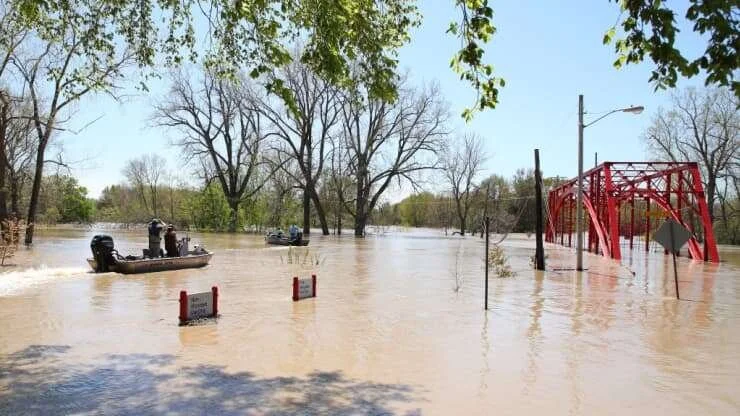








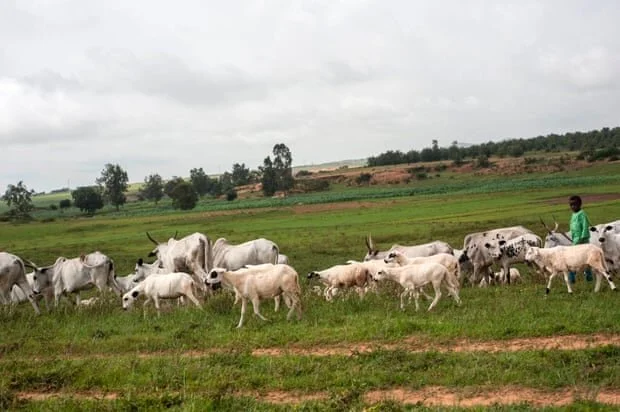
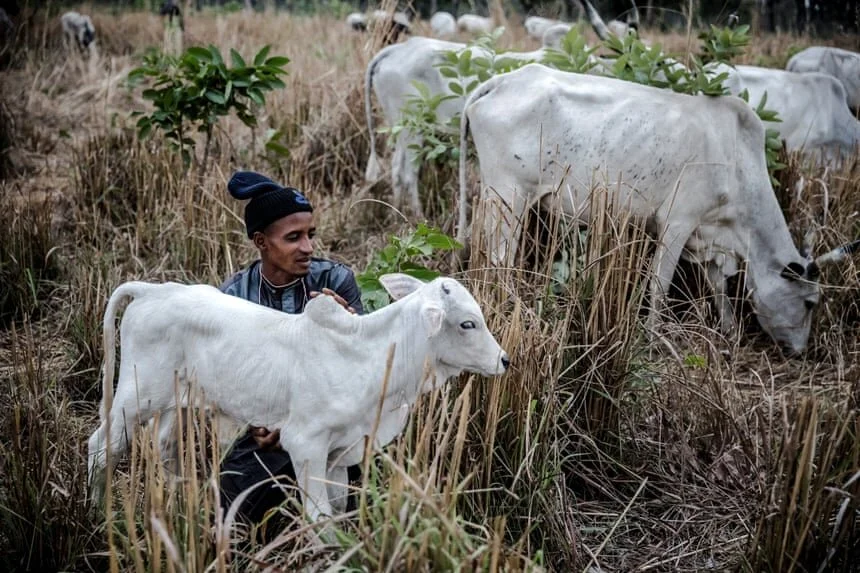
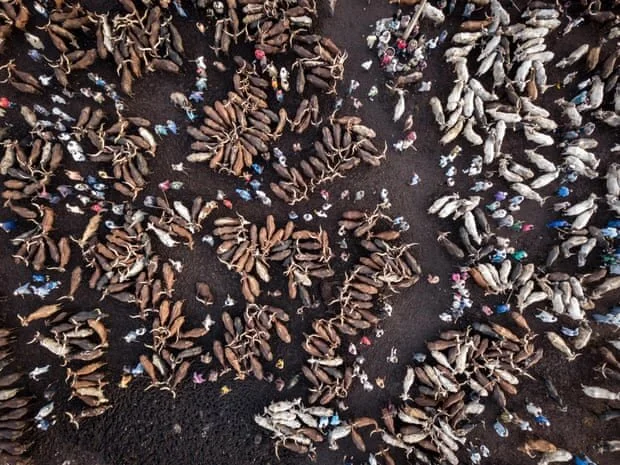
![Muaz Kory/Al Jazeera]](https://images.squarespace-cdn.com/content/v1/5324bf63e4b05fc1fc6ea99d/1610097127277-ID4QWOVPX62QX0UDUZSL/green.JPG)
